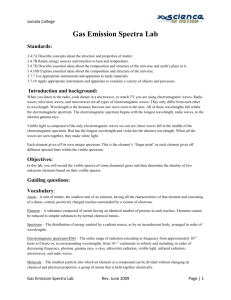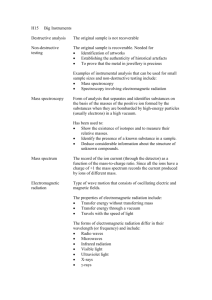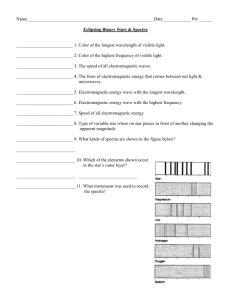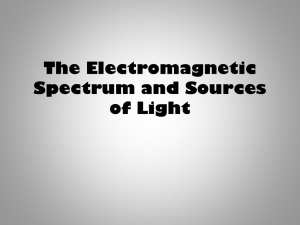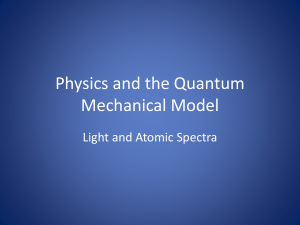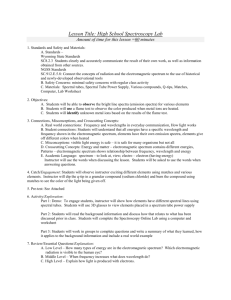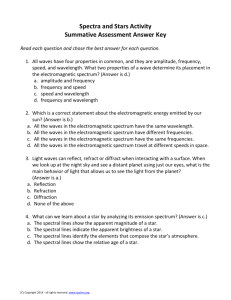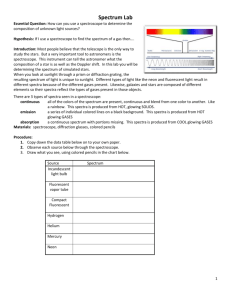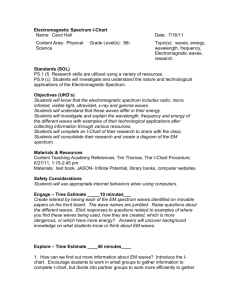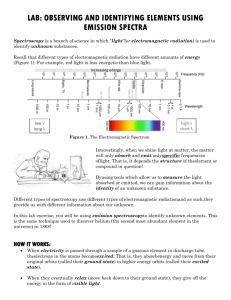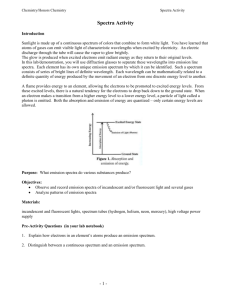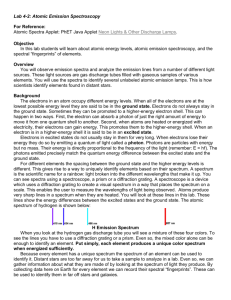Gas Emission Spectra
advertisement
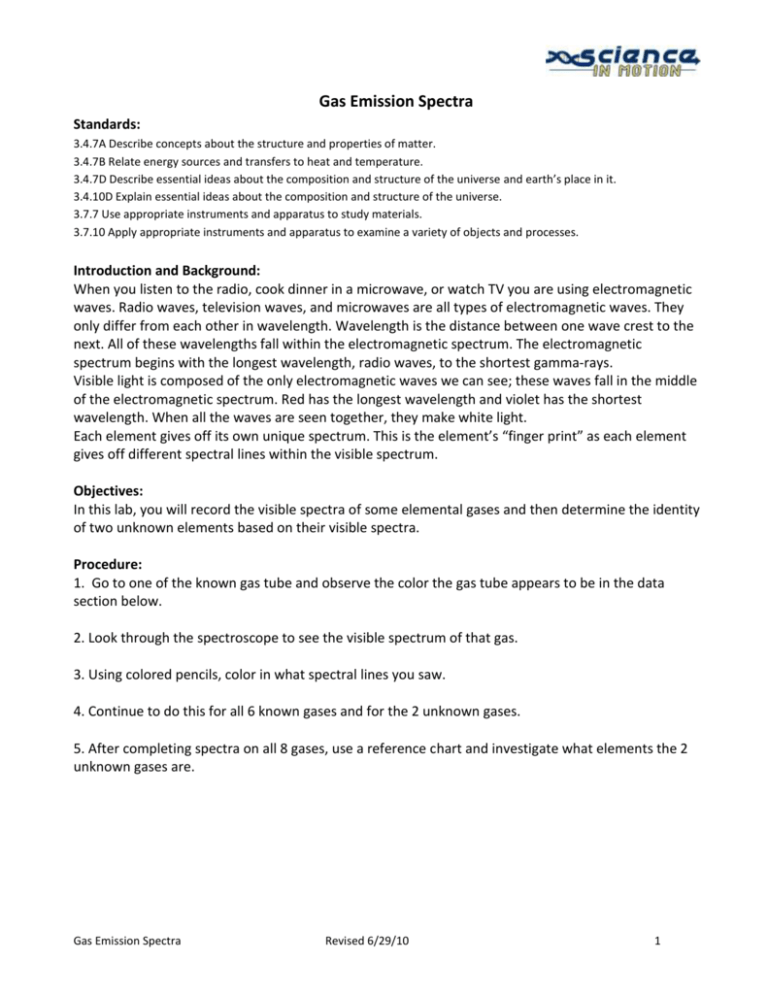
Gas Emission Spectra Standards: 3.4.7A Describe concepts about the structure and properties of matter. 3.4.7B Relate energy sources and transfers to heat and temperature. 3.4.7D Describe essential ideas about the composition and structure of the universe and earth’s place in it. 3.4.10D Explain essential ideas about the composition and structure of the universe. 3.7.7 Use appropriate instruments and apparatus to study materials. 3.7.10 Apply appropriate instruments and apparatus to examine a variety of objects and processes. Introduction and Background: When you listen to the radio, cook dinner in a microwave, or watch TV you are using electromagnetic waves. Radio waves, television waves, and microwaves are all types of electromagnetic waves. They only differ from each other in wavelength. Wavelength is the distance between one wave crest to the next. All of these wavelengths fall within the electromagnetic spectrum. The electromagnetic spectrum begins with the longest wavelength, radio waves, to the shortest gamma-rays. Visible light is composed of the only electromagnetic waves we can see; these waves fall in the middle of the electromagnetic spectrum. Red has the longest wavelength and violet has the shortest wavelength. When all the waves are seen together, they make white light. Each element gives off its own unique spectrum. This is the element’s “finger print” as each element gives off different spectral lines within the visible spectrum. Objectives: In this lab, you will record the visible spectra of some elemental gases and then determine the identity of two unknown elements based on their visible spectra. Procedure: 1. Go to one of the known gas tube and observe the color the gas tube appears to be in the data section below. 2. Look through the spectroscope to see the visible spectrum of that gas. 3. Using colored pencils, color in what spectral lines you saw. 4. Continue to do this for all 6 known gases and for the 2 unknown gases. 5. After completing spectra on all 8 gases, use a reference chart and investigate what elements the 2 unknown gases are. Gas Emission Spectra Revised 6/29/10 1 Science in Motion Juniata College Data: Argon (Ar) Observed Color_______________ Color________________ Hydrogen (H2) Observed Krypton (Kr) Observed Color_______________ ________________ Neon (Ne) Observed Color Mercury (Hg) Observed Color _______________ ____________ Carbon Dioxide (CO2) Unknown 1 Observed Color _______________ _________________ Unknown 2 Observed Color Observed Color Questions: 1. What colors do you see when you look at a white light? 2. Stars are composed of gases. How are astronomers able to differentiate these gases? 3. What element is Unknown 1? Gas Emission Spectra Revised 6/29/10 2 Science in Motion Juniata College 4. What element is Unknown 2? Gas Emission Spectra Revised 6/29/10 3
